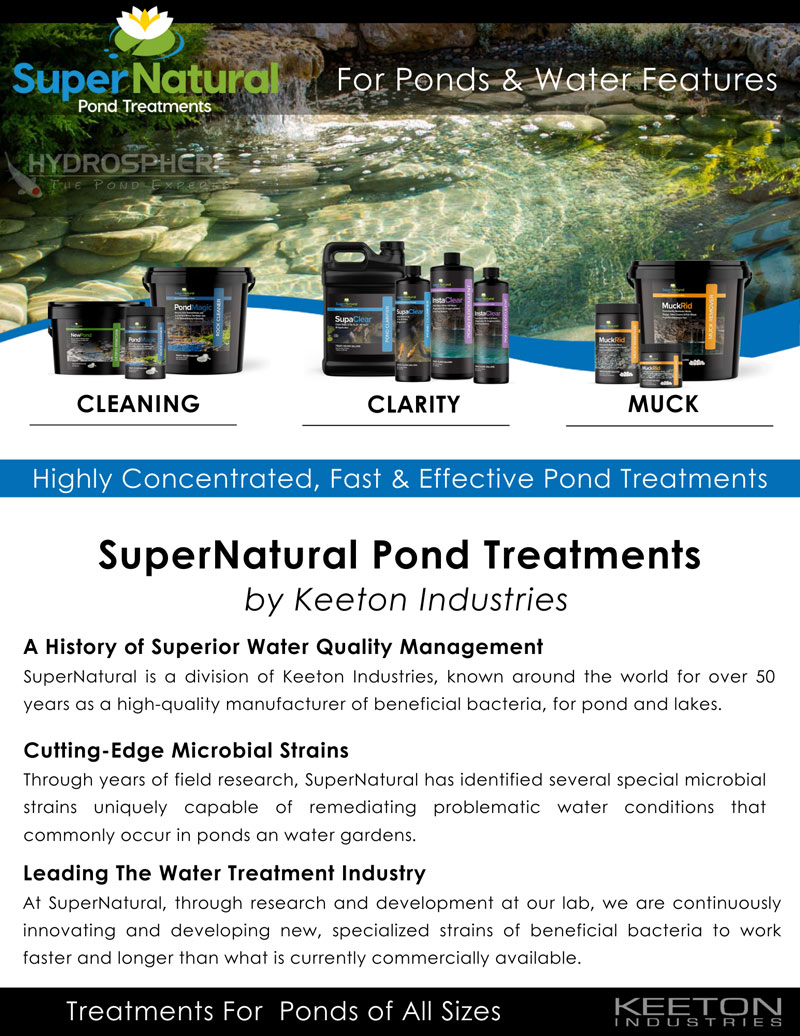An Unusual Pond Predator
Usually when you hear the term ‘Pond Predator’ you think of great blue herons, kingfishers, mink or otters. These are the the most common predators that come to your pond looking for a meal, ie. your koi, goldfish and even frogs. However there is another animal that is not so much a predator, but it is just as much a threat to your pond and fish as any of the others mentioned above. The Muskrat. Now if you are unfamiliar with muskrats, they are a semi-aquatic rodents that look similar to a small beaver (without the flat tail). They mainly eat vegetation like cattails, bull rushes etc. They seem pretty harmless, except for the fact that they like to burrow into the banks of ponds under the waters surface.
If a muskrat decides it likes your pond, it will burrow into the side of your pond whether it has a rubber liner or not. As you can see, the results aren’t very good.
This is a photo of our koi pond last fall, after a visit from a muskrat. If you look closely, you can see a bit of the largest hole that was chewed through the liner.
Typically your pond water level won’t drop more than 6-8″ the first time it decides to dig, since they make their entrance just below the surface of the water.
The first sign that there was a muskrat in our pond wasn’t actually the lower water level, I found pieces of water lily tubers floating in the pond skimmer with teeth marks where they had been chewed. In fact the water level didn’t drop until a few days later, once it began to burrow.
This muskrat was very stealthy, I didn’t actually see it swimming or sitting around the edges of the pond. Occasionally I could hear it chewing (on some of my favourite water lilies) but it stayed hidden all the time. This pond is normally quite overgrown with marginal plants so it provided plenty of hiding places.
Luckily it completely ignored the koi and vice verse, the koi were not spooked in the least, feeding and acting completely normal. If it had’t been for the water lily tubers in my skimmer, I wouldn’t have know what was causing the leak.
[column col=”1/2″]The first hole I detected was fairly small, about 6″ in diameter. Since it was near the surface and not too large, I thought this wasnt too bad and I could repair it. Unfortunately, this wasn’t the last hole it chewed. Although the muskrat had no problems chewing through EPDM pond liner, I think it had a hard time chewing through the geotextile underlay beneath it. As you can see in the picture on the right, the murskrat stopped chewing once it reached the underlay.[/column][column col=”1/2″]
[/column]
[column col=”1/2″]
[/column][column col=”1/2″]The next hole was larger and would be more difficult to repair. It was located where the bog filter liner joins onto the main pond liner[/column]
[column col=”1/2″]The last hole I found was the biggest. This time I knew there was no repairing or patching the liner. The hole was over 3′ long and in a spot where there was a lot of folds. [/column]
[column col=”1/2″]
[/column]
Of course, while all of this was going on I was doing my best to catch this critter. Live traps didn’t seem to work, at least not for the muskrat. I did however manage to catch a possum.
In the end, I did manage to trap the muskrat. But not before it destroyed most of my water lilies (10+ years old), and pond liner.


